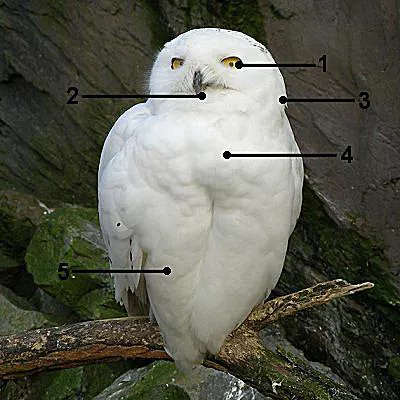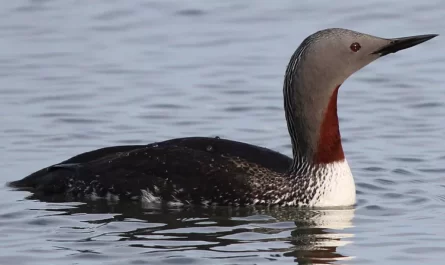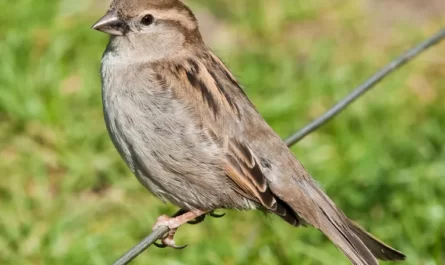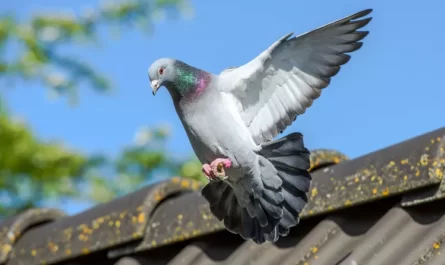
IN THIS ARTICLE
- Snowy Owl Identification
- Snowy Owl Habitat and Distribution
- Migration Pattern
- Behavior
- Diet and Feeding
- Nesting
- Snowy Owl Conservation
- Tips for Backyard Birders
- How to Find this Bird
- Explore More Species in This Family
The snowy owl (Bubo scaniacus) is the largest of the North American owls by weight, and spotting one is rare unless you live in the far northern edges of the northern U.S. states. This bird, with yellow eyes and white plumage with grayish bars, spends its summers north of the Arctic Circle and migrates in winter down into Canada, the far north, and occasionally as far south as the mid, United States. Unlike most owls, it hunts in the daylight, most often for small prey in fields, marshes, and other open areas. It is a member of the Strigidae family (true owls). Visually, it is a very striking bird, now familiar to many people as Hedwig, the pet owl of Harry Potter in the film series.1
This fact sheet will give you the key information needed to spot and identify a snowy owl.
| Fast Facts | |
|---|---|
| Scientific Name | Bubo scandiacus |
| Common Name | Snowy owl |
| Lifespan | 10 years |
| Size, Male | 25 to 27 in. |
| Size, Female | 27 to 29 in. |
| Weight, Male | 3.1 to 3.4 lbs |
| Weight, Female | 3.4 to 3.5 lbs. |
| Wingspan, Male | 8 to 9.5 in. |
| Wingspan, Female | 8 to 9.5 in |
| Conservation Status | Listed as vulnerable |
Snowy Owl Identification
The snowy owl is one of the most distinct and recognizable owls in the world, but they can be hard to spot in the wild, thanks to excellent camouflage. Overall, they are white in color, which allows them to blend in seamlessly with snowy surroundings. Young birds and females tend to have brownish-gray bars, but with males, these often fade as the bird ages, leaving them a pure white. The black feet are entirely covered with feathers, and the eyes are yellow. There are no ear tufts of the type found on many other owl species, and the necks are quite short. Spotted in profile on a perch, the owl has a dense, oval shape.
In flight, snowy owls reveal rounded, heavily feathered wings that make the bird utterly soundless in flight. The feet, covered with heavy feathers, are nearly invisible when in flight, though you may spot them during takeoff and landings. The brownish-gray wing bars are more evident in flight than when the bird is perched. The heaviest barring is on the upper wings, head, back, and abdomen, with female birds being much more heavily marked than the almost pure white males.

Snowy Owl Habitat and Distribution
The snowy owl breeds in the far northern arctic, migrating south into northern tundra areas across North America and Asia in the winter. In North America, the winter range can include the northern edges of the United States. During years of good breeding and feeding conditions, the birds may migrate considerably further south into the mid United States. During these unusual “irruptive” years following a period of plentiful prey, snowy owls have been spotted as far south as Florida.
Snowy owls generally inhabit wide open tundra, field, marsh wetlands, and prairie areas, and have an unusual fondness for the open fields that surround many northern airports. They generally avoid forested areas in favor of open areas where they can easily spot lemmings and other small prey animals.
Migration Pattern
The snowy owl typically breeds in arctic regions, migrating south into Canada and the extreme northern United States in winter. However, in some years when the breeding season has been especially productive, snowy owls will sometimes migrate as far south as the mid United States, from Georgia to northern California.
Behavior
The snowy owl is a patient, solitary hunter that often perches on low trees or fence posts as it sits motionless watching and listening for prey. In flight, its wings show very quick upstrokes, with long, powerful downstrokes. They are observed to be most active in the morning hours immediately after sunrise and in the period just around dusk. During midday hours or during inclement weather, they may remain motionless on perches for many hours.
Diet and Feeding
This bird often hunts by day, preferring lemmings or other ground rodents but also taking small mammals or birds when necessary. It will hunt both at night and during the day, usually perching to survey the surroundings and darting down when it spots or hears prey. It sometimes hunts by flying low to the ground or even from ground-level perches. It catches prey in its talons rather than its beak.
Nesting
Breeding occurs mainly in the arctic regions and is most abundant in years when lemmings and other rodents are plentiful. Snowy owls nest on raised hummocks or ridges with a good view onto the open tundra. The nest itself is a simple depression in the ground that is not lined with grasses or twigs.
Eggs and Young
The female lays 3 to 11 whitish eggs, with more eggs common in years when food supplies are plentiful. The eggs hatch at intervals, with the female remaining on the nest while the male hunts and brings food. The young can leave the nest after two or three weeks, but it can take as much as seven weeks for them to fly competently. The parents may feed the young for at least nine or ten weeks.2
Young birds are more brownish than white. The males gradually transform into pure white birds, while females will retain some brownish markings into maturity.
Snowy Owl Conservation
Listed as a “red list” vulnerable species by the IUCN (International Union for Conservation of Nature), it is estimated that there are 30,000 to 100,000 snowy owls worldwide. It is known that the population is declining, probably due to global warming. Because breeding areas are quite remote, these birds are not much affected by other forms of human interference, but as global temperatures rise, the suitable breeding areas decline.
Within the snowy owl’s range, numbers can be encouraged by doing whatever is possible to protect and expand grassy or marshy terrain—the habitat in which this bird hunts.
Tips for Backyard Birders
The snowy owl is a raptor that isn’t lured to your yard by birdfeeders—unless those feeders become popular with mice or other small rodents who feed on seeds scattered on the ground. If you live in a region with long snowy winters, such spottings in your yard are possible, though not common. You may, however, be able to foster open areas around your property to provide the grassy terrain in which these birds like to hunt.
Birding enthusiasts who live near meadows and fields with healthy rodent populations might well spot a snowy owl during the winter months. The birds generally migrate back to the arctic in summer. While this raptor is capable of taking prey as large as a rabbit, it is very rare for cats or small dogs to fall victim to a snowy owl attack. This bird prefers to eat lemmings, voles, and mice. In residential situations, anything larger than a chipmunk or small squirrel is unlikely to be targeted by a snowy owl.
How to Find this Bird
In summer, you are unlikely to see this bird unless you travel to the far northern arctic tundra. In winter, when it migrates south, you are most likely to spot a snowy owl in prairies, farmlands, marshes, beaches, and sand-dune regions, where it hunts for small game in the snow.3 Unlike most owls, which are nocturnal hunters, the snowy owl often feeds in the daylight hours, watching closely from a low perch, then spotting or hearing movement and swooping down to catch prey in its talons. It is relatively common to spot snowy owls perched motionless on fence posts adjoining pasture or prairie areas during the winter months if you happen to live within its migration range. They may even hunt from the ground, perched on a high rise as they survey the surrounding area for prey.
Surprisingly, the buffer fields surrounding major airports in northern cities often harbor snowy owls in the wintertime. At Logan airport in Boston, for example, snowy owls can become so prevalent that they are trapped and moved for their protection.
Explore More Species in This Family
Owls comprise a very interesting and diverse class of raptor birds. Other large owls to watch for include:
Detailed wild bird fact sheets are available on many other of your favorite bird species.



